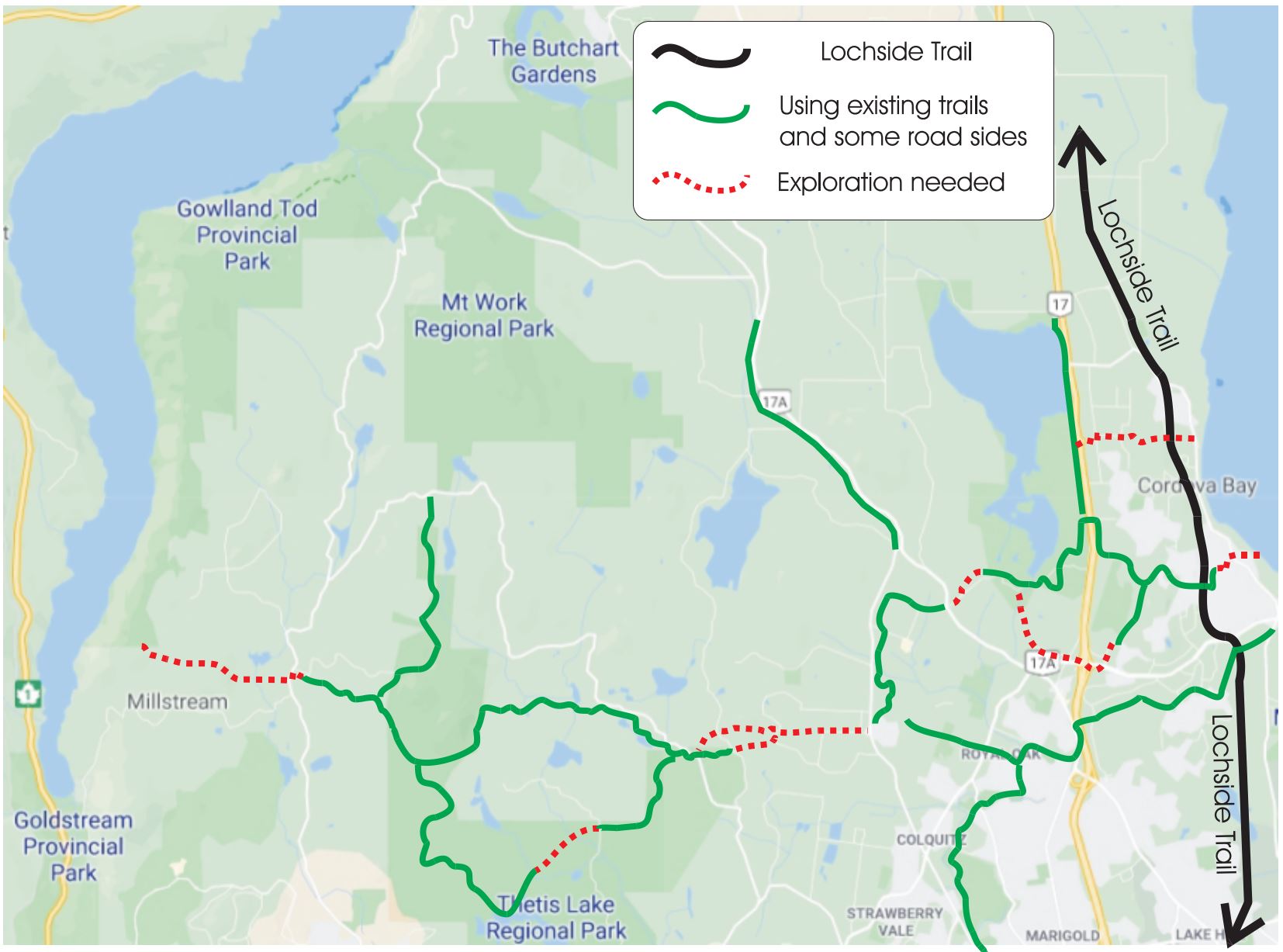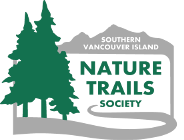August 27th, 2021
The Proposed Coastal Connector Trail
The Coastal Connector Trail represents a vision for a continuous 18-20 km long trail to be achieved by connecting specific gaps in existing nature trails situated on a variety of public, private, and territorial lands. Establishing this network of shared-use trails will help promote outdoor recreation opportunities across the Greater Victoria Region in the East to West direction across the peninsula (from Finlayson Arm to Cordova Bay).
Such a trail network has a number of social, educational, and environmental benefits which can help support community targets for a more sustainable and healthy future.
This nature trail could promote recreational and active transportation options by connecting existing various parks and communities. The extent of this trail network would provide options to connect the following parks: Thetis Lake Regional Park, Francis/King Regional Park, Elk Lake Regional Park, Mt Work Regional Park, Gowlland Tod Provincial Park, and Goldstream Provincial Park. This proposed sea-to-sea, “shared-use”1 nature trail would connect with existing trails and recreational areas where possible, and build connections where it’s most feasible.
The general route is proposed to travel through the following areas:
- 3 municipalities (District of Highlands, Town of View Royal and District of Saanich)
- The asserted territory of the lək̓ʷəŋən Indigenous peoples of the Songhees Nation and Esquimalt Nation and W̱SÁNEĆ Indigenous peoples of the Tsartlip First Nation, Tsawout First Nation, Pauquachin First Nation, Tseycum First Nation and Malahat Nation, the Te’Mexw Treaty Association
- Regional and Provincial Parks (by the Capital Regional District and BC Parks)
- Other public and private lands.Please see the concept map below (as of February 15th, 2022).

The Southern Vancouver Island Nature Trails Society (Nature Trails Society) is a not-for-profit society and registered charity dedicated to supporting, building, and connecting safe, enjoyable, and sustainable nature trails by collaborating with diverse stakeholders.
As a first step, the Nature Trails Society is seeking input from the four local government jurisdictions given the critical importance of working with their planning and parks departments. In parallel, we are reaching out to Indigenous communities with traditional territories that intersect with the general routing of the proposed trail.
Following this engagement, we hope to conduct detailed surveys and land ownership identification to establish one or more viable routes for a continuous trail for broad consultation. Trail use (e.g., hiking, trail running, mountain biking and horseback riding planning) would be aligned with the policies and management plans of landowners and managers, including local governments and BC Parks.
We welcome your input and ideas NatureTrailsSociety@gmail.com
Click play below to listen to a media interview on the proposed trail that was aired on CBC All Points West on August 25, 2021.
- “Shared use” here means a trail between 30 cm (1 foot) and 1.5 metres (5 feet) wide with good visibility and frequent areas for travelers to pull or step off to let others pass. It is not meant for constant flow of traffic in both directions simultaneously. Users need to be aware of oncoming traffic and adjust accordingly. While the trail may be wide enough to accommodate multiple users in some areas, the minimum for the proposal is shared use. This reduces environmental impact and encourages slower speeds.
November 8th, 2021
Current Goals (Initial Phase) of the Proposed Coastal Connector Project
There are diverse stakeholders to be involved in the process of making this trail network a reality.
Here below are the current goals in the initial consultation phase of the proposed Coastal Connector Trail.
1. Connect and consult with municipalities (Highlands, View Royal, and Saanich) in an effort to align municipal park plans
2. Connect and consult with the Capital Regional District in efforts to introduce the idea and align with long-term regional planning
3. Consultation and Stakeholder Engagement
- Meaningful consultation with those with Traditional Rights and Title is a major priority.
- Indigenous communities include: lək̓ʷəŋən Indigenous peoples of the Songhees Nation and Esquimalt Nation and W̱SÁNEĆ Indigenous peoples of the Tsartlip First Nation, Tsawout First Nation, Pauquachin First Nation, Tseycum First Nation and Malahat Nation, the Te’Mexw Treaty Association.
